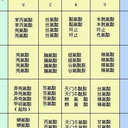Metabolic engineering of Enterobacter cloacae for high-yield production of enantiopure (2R,3R)-2,3-butanediol from lignocellulose-derived sugars.
Keywords
Abstract
Biotechnological production of biofuels is restricted by toxicity of the products such as ethanol and butanol. As its low toxicity to microbes, 2,3-butanediol (2,3-BD), a fuel and platform bio-chemical, could be a promising alternative for biofuel production from renewable bioresources. In addition, no bacterial strains have been reported to produce enantiopure 2,3-BD using lignocellulosic hydrolysates. In this study, Enterobacter cloacae strain SDM was systematically and metabolically engineered to construct an efficient biocatalyst for production of the fuel and enantiopure bio-chemical-(2R,3R)-2,3-BD. First, the various (2R,3R)-2,3-BD dehydrogenase encoding genes were expressed in a meso-2,3-BD dehydrogenase encoding gene disrupted E. cloacae strain under native promoter Pb of the 2,3-BD biosynthetic gene cluster of E. cloacae. Then, carbon catabolite repression was eliminated via inactivation of the glucose transporter encoding gene ptsG and overexpression of a galactose permease encoding gene galP. The resultant strain could utilize glucose and xylose simultaneously. To improve the efficiency of (2R,3R)-2,3-BD production, the byproduct-producing genes (ldh and frdA) were knocked out, thereby enhancing the yield of (2R,3R)-2,3-BD by 16.5% in 500-mL Erlenmeyer flasks. By using fed-batch fermentation in a 5-L bioreactor, 152.0 g/L (2R,3R)-2,3-BD (purity>97.5%) was produced within 44 h with a specific productivity of 3.5 g/[Lh] and a yield of 97.7% from a mixture of glucose and xylose, two major carbohydrate components in lignocellulosic hydrolysates. In addition, when a lignocellulosic hydrolysate was used as the substrate, 119.4 g/L (2R,3R)-2,3-BD (purity>96.0%) was produced within 51 h with a productivity of 2.3g/[Lh] and a yield of 95.0%. These results show that the highest records have been acquired for enantiopure (2R,3R)-2,3-BD production by a native or engineered strain from biomass-derived sugars. In addition to producing the 2,3-BD, our systematic approach might also be used in the production of other important chemicals by using lignocellulose-derived sugars.





